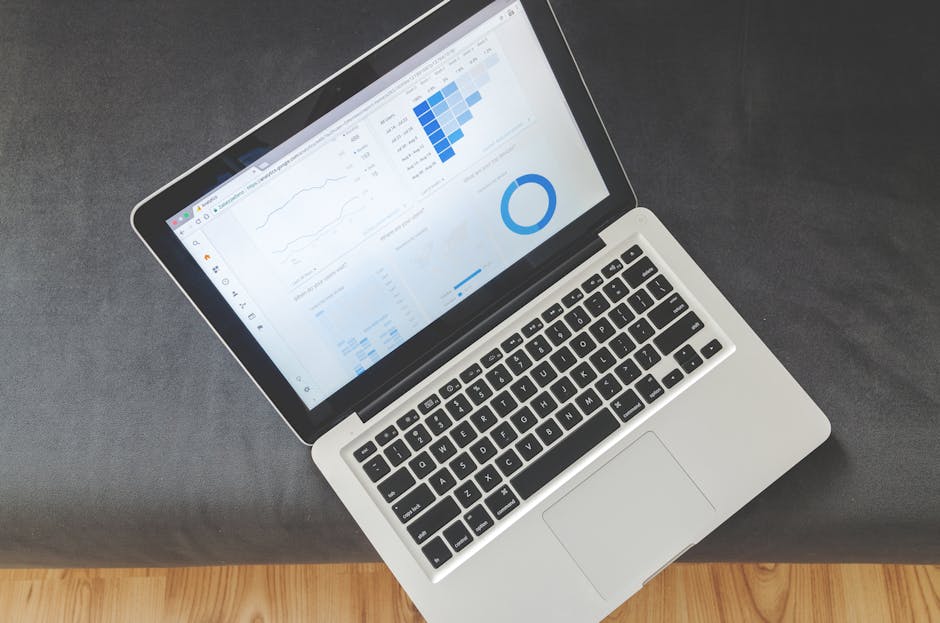Revolutionizing Reporting in Retail
In an era where every second counts, retail is undergoing a dramatic shift. Major stores like Walmart and Target are cutting through data clutter by embracing efficient report automation and enhanced data visualization. Systems such as Looker Studio, Power BI, and Tableau transform raw figures into actionable insights, helping managers make swift decisions.

This new approach means agility and clarity in reporting are no longer optional—they are essential for staying competitive in the fast-paced retail environment.
Real-World Efficiency Gains
Case studies provide compelling evidence of the benefits. For example, Kroger recently overhauled its reporting processes with automation tools, reducing report generation time by nearly 40%. This led to significant cost savings and improved operational resilience.
Similarly, a prominent retail chain in the consumer electronics sector enhanced its inventory analysis using integrated dashboards powered by Qlik Data Integration and SAS Visual Analytics. These transformations have made clear that report automation is a strategic imperative, not just a fleeting trend.
Enhancing Clarity with AI and Visualization
Advanced artificial intelligence is now a cornerstone in retail data visualization. By evolving from static graphs to interactive dashboards, AI technologies simplify complex trends and reveal subtle patterns. Tools like Power BI’s dynamic interface empower decision-makers to promptly identify trends and adjust strategies before potential issues escalate.
Further, integrating AI-driven forecasting with automation not only speeds up decision-making but also uncovers hyper-local trends. This means retail managers can adapt strategies using real-time sales data and simulation models that reflect local market dynamics.
Click for in-depth insights on AI-driven predictive analytics
AI systems are now capable of processing environmental data, social media trends, and customer sentiment. These factors contribute to more nuanced inventory management and personalized customer experiences. For instance, when a sudden spike in social media buzz occurs around a product, AI can immediately adjust forecasts to meet the anticipated surge in demand.
Expert Opinions and Future Trends
Prominent analytics experts, including those advising Fortune 500 companies, predict that retail reporting will soon intertwine even more deeply with real-time intelligence. Future systems are expected to integrate environmental data and social media trends alongside traditional sales figures, refining inventory management and sales forecasting.
According to industry leaders, the next wave of advanced reporting tools will offer even more comprehensive insights, paving the way for hyper-personalized customer interactions and more robust operational strategies.
"The integration of real-time data with AI not only transforms how we view performance metrics but also redefines what success looks like in the retail world." – A leading analytics expert
Comparative Analysis of Reporting Tools
| Feature | Legacy Tools | Modern Platforms |
|---|---|---|
| Speed | Slow processing; delays in report generation | Real-time analytics; accelerated report generation |
| Accuracy | Prone to human error | Automated data validations reduce errors |
| User Experience (UX) | Static, less intuitive interfaces | Interactive dashboards; user-friendly designs |
| Integration | Limited connection with new data sources | Seamless integrations with diverse platforms |
| Modern platforms are designed to meet fast-paced retail environments. Look for tools with real-time features, error reduction capabilities, and robust integration options. | ||
Key Terms in Retail Analytics
- Sell-through Rate
- A metric that shows the percentage of inventory sold over a specific period.
- Basket Analysis
- A technique used to analyze combinations of products purchased together to optimize promotions and inventory.
- Footfall Conversion
- The ratio of store visitors to actual purchasers, helping retailers gauge store performance.
Strategies for Impactful Adoption
The future is clear: embracing report automation is an imperative for staying competitive. Retail managers should invest in sophisticated reporting tools to highlight critical metrics, streamline workflows, and secure a competitive edge.
Iterative feedback from analysts is vital for continuously refining automated templates, ensuring that systems remain adaptive to real-time data and shifting market conditions. Ultimately, a proactive approach to automated reporting fuels better decision-making and fosters sustainable success.